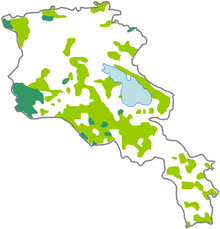Religion in Armenia
Yerevan also has a small community of Muslims, including ethnic Kurds, Iranians, and temporary residents from the Middle East.[6] "Beyond its role as a religious institution, the Apostolic Church has traditionally been seen as the foundational core in the development of the Armenian national identity as God's uniquely chosen people.Adherents call themselves "Hetans" (Hetanos հեթանոս, the Old Armenian biblical term loaned from Greek ἐθνικός "gentile").The movement traces its origins back to the work of the early-20th-century political philosopher and revolutionary Garegin Nzhdeh and his doctrine of tseghakron (rejuvenation through national religion).Mass migration of Molokans (as well as Doukhobors, Khlysts, and Skoptsy) to the Caucasus took place in the 1830s, when Nicholas I focused efforts on resettlement, particularly to Armenia.[12] 19th-century Molokan settlements include the villages of Vorontsovka, Nikitino, Voskresenovka, Privolnoye, Elenovka, Semyonovka, Nadezhdino, and Mikhailovka.[2] The Church of Jesus Christ of Latter-day Saints claims approximately 3,000 adherents in Armenia at the end of 2011; the 2011 census found 241.[2][15] About 1% of Armenia's population (23,374 as per the 2011 census), mostly ethnic Yazidis, an ethno-religious group living in the western part of the country, follow Yazidism.Still, despite the small numbers, high intermarriage rate and relative isolation, a lot of enthusiasm exists to help the community meet its needs.There is, however, a minority of ethnic Armenian Muslims, known as Hamshenis, the vast majority of which live outside of Armenia mostly in Turkey, and to a lesser extent, in Russia.Per the writings of Zenobius Glak, an early classical Armenian writer, two princes and their families fled to Armenia in 149 BC.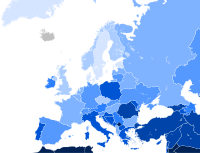

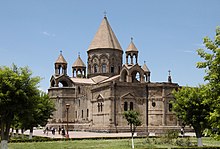
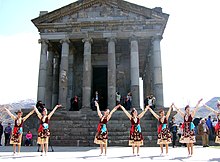



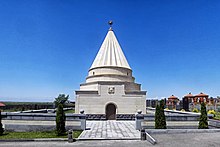

Armenian Apostolic ChurchCatholicismEvangelicalismYazidismEastern OrthodoxyJehovah's WitnessesArmeniansArmeniaChristiansChristianitystate religionEuropeArmenianPew Research CenterChristianity in EuropeMount AragatsAragatsotn ProvinceArmavir ProvinceArarat ProvinceShirak ProvinceLori ProvinceMolokansGegharkunik ProvinceMormonsBahá'í FaithIraniansFreedom of religion in ArmeniaEtchmiadzin CathedralSaint Gregory the Illuminator Cathedral, YerevanapostlesBartholomewThaddeusreligionSt. Gregory the IlluminatorTiridates IIIconvertArmenian paganismnational churchArmenian peopleEastern ChristianOriental OrthodoxChristianHetanismArmenian folk dancingGarni Templeneo-paganGaregin NzhdehtseghakronArmenologistArmenian nationalismRepublican Party of ArmeniaCatholic Church in ArmeniaArmenian Catholic ChurchCatholic ChurchApostolic Administration of the CaucasusArmenian Evangelical ChurchEvangelicalsProtestantsGeorgian Orthodox Church in ArmeniaHayhurumChurch of the Intercession of the Holy Mother of GodMolokans in ArmeniaTsaghkadzorAlexander ILake SevanDilijanZangezurDoukhoborsKhlystsSkoptsyNicholas IVorontsovkaNikitinoVoskresenovkaPrivolnoyeElenovkaSemyonovkaNadezhdinoMikhailovkadekulakizationNestoriansThe Church of Jesus Christ of Latter-day SaintsYazidis in ArmeniaYazidisethno-religiousGeorgiaQuba Mêrê DîwanêAknalichHistory of the Jews in ArmeniaIsraelIslam in ArmeniaSunnisAzerbaijanisFirst Nagorno-Karabakh WarBlue MosqueHamshenisTurkeyRussiaBaháʼí Faith in ArmeniaBaháʼí FaithBábismexecution of the BábYerevanPerestroikaBuddhism in ArmeniaReligion by countryZoroastrianism in ArmeniaWayback MachineEffendi, ShoghiIndian Historical ReviewIran & the CaucasusArmenian Brotherhood ChurchGeorgian Orthodox ChurchBuddhismJudaismZoroastrianismArmenian mythologyChristianization of ArmeniaArmenian Christian tradition in the 20th centuryPaulicianismArchonticsChazinzariansTondrakiansFreedom of religionThe Church of Jesus Christ of Latter-day Saints in the CaucasusEastern Christianity

